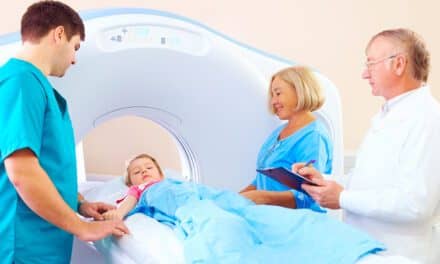
Elad Levy, MD, FACS, FAHA, Director of Endovascular Stroke Service, Kaleida Health’s Gates Stroke Center
Toshiba and Kaleida Health recently announced the results of a study that analyzed the patient and fiscal benefits of using Toshiba America Medical System Inc’s Aquilion ONE CT system in diagnosing acute stroke. Kaleida Health, which has been using the CT system since 2008, set out to quantify the benefits of the Aquilion ONE in stroke diagnosis through a noncontrolled study, evaluating imaging procedures, inpatient length of stay, and discharge disposition. The cost savings that the study uncovered were staggering: upwards of $1 million annually could be saved through the use of the Aquilion ONE CT system when diagnosing strokes.
“The goal of the noncontrolled study was to measure the economic impact of 320-detector row, 640-slice CT on the diagnostic workup of patients presenting with symptoms of acute stroke and transient ischemic attack,” said Elad Levy, MD, FACS, FAHA, professor of neurosurgery and radiology, University at Buffalo Neurosurgery, and director of Endovascular Stroke Service, Kaleida Health’s Gates Stroke Center (GSC). “It also tracked improvements over time. Saving nearly $1 million a year is quite cost-effective.”

Kaleida Health’s Gates Stroke Center conducted a study that showed upwards of $1 million annually could be saved through the use of Toshiba’s Aquilion ONE CT system when diagnosing strokes.
The methodology was simple. Toshiba and Kaleida Health’s GSC reviewed the diagnostic workup for stroke patients and analyzed the imaging procedures utilized during the acute inpatient episode of care, focusing on the changes in the diagnostic workup, inpatient length of stay, and discharging disposition since acquiring the Aquilion ONE.
“Inpatient data sets from July to September 2007, prior to the Aquilion ONE installation, were compared with data sets from July to September 2009—phase one—and July to September 2010—phase two,” added Levy.
Not only did the study find a financial benefit to the use of the system, there were other impressive results. For example, the study found a 0.79-day decrease in average patient length of stay. Other findings included a 14.8% improvement in patients discharging to home, a 23.3% increase in patients discharging to home health care, and a 45% reduction in patients discharging to rehab.
“Being able to perform whole brain perfusion and digital angiography with the Aquilion ONE has enabled more efficient and accurate stroke diagnoses, while resulting in tremendous patient and cost savings benefits,” Levy said. “The study also shows year-over-year improvements as we continue to find additional ways to maximize the technology.”
In addition, using Toshiba dose reduction methods in conjunction with the Aquilion ONE system can help with the reduction of radiation dose that patients receive. Levy said. “We currently run between 1.5 and 2 CT head without contrast equivalents for a perfusion study. With the new adaptive dose reduction algorithm, we will be reliably closer to 1.5 CT head.”
Since the study, Kaleida Health moved the Aquilion ONE system closer to its emergency department in order to improve throughput, further increasing economic and patient benefits. And Toshiba remains committed to helping its clients and their patients deliver the highest level of diagnostic quality and optimal patient outcomes.
“Our partnership with GSC is a perfect example of Toshiba working directly with customers to improve patient outcomes and reduce overall health care costs,” said Tim Nicholson, senior manager, market development, CT business unit, Toshiba. “In today’s health care landscape, the results of this 2-year study are more important than ever and are achievable for other institutions with a multidisciplinary collaboration and advanced imaging technology like the Aquilion ONE.”






